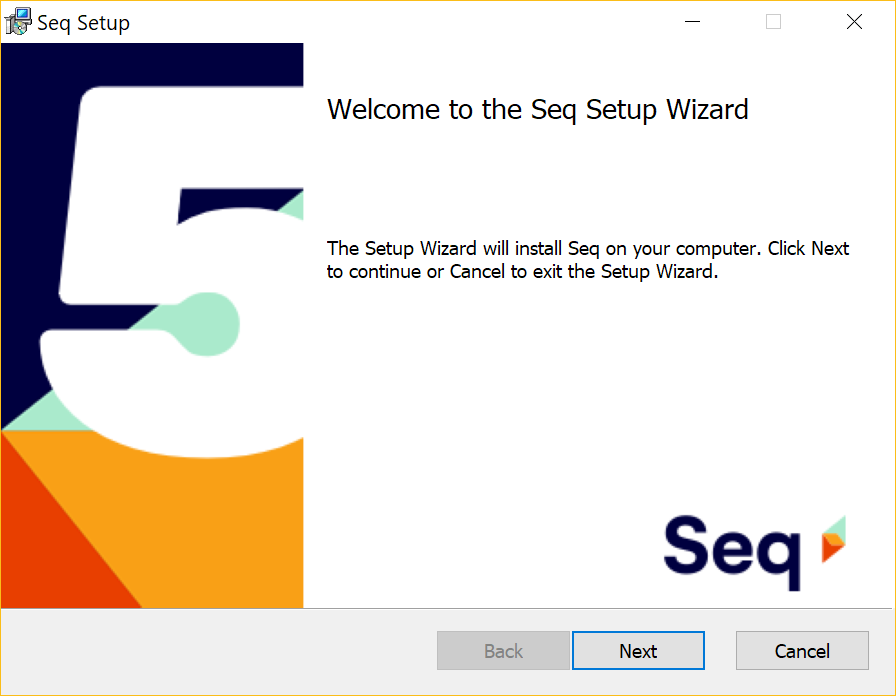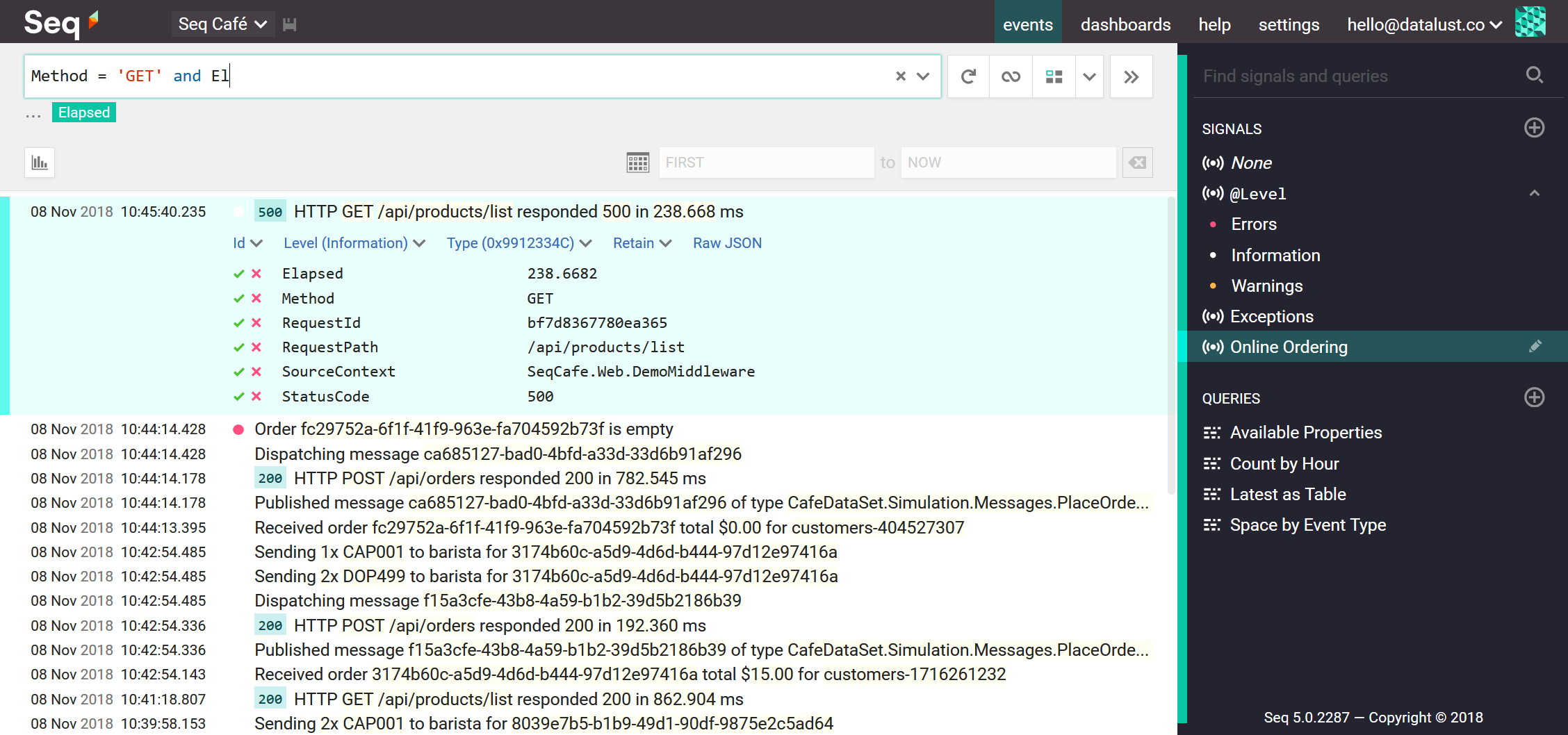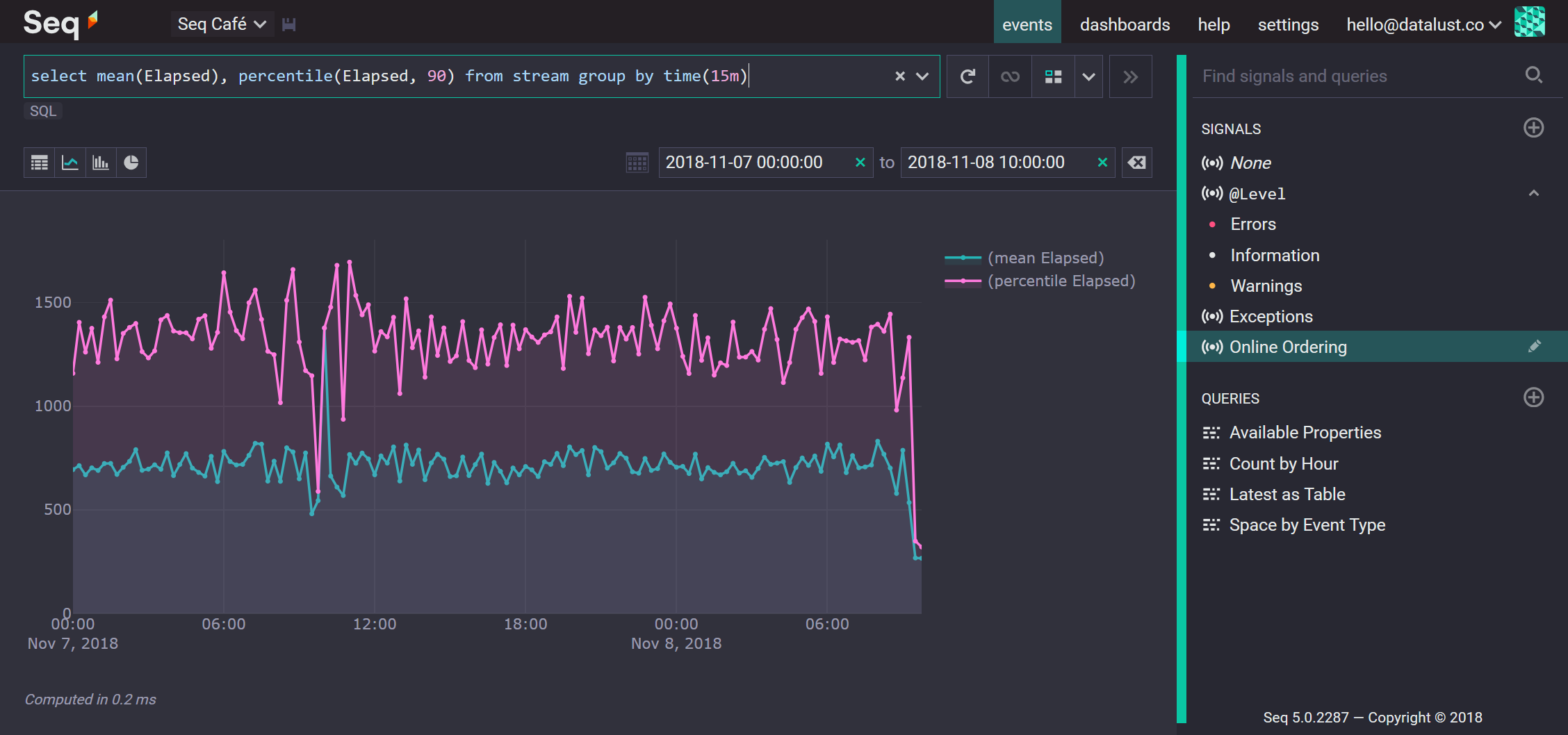Today we're excited to take the wraps off Seq 5, a major update to our much-loved log server — bringing faster storage and lower resource requirements, support for Docker on Linux, beautiful new dark and light themes, and a host of improvements throughout the product.
You can download the installer for Windows or pull the datalust/seq Docker image now.
Seq 5 light theme
Seq 5 dark theme
Seq 5 is an epic release that puts uncompromising application diagnostics within the reach of every development team:
- Docker/Linux support: thanks to the magic of .NET Core and Docker, you can run Seq 5 practically anywhere, including on Linux and macOS, and in orchestration engines such as Kubernetes
- Native storage: we've replaced ESENT and LMDB with an all-new, highly-efficient, cross-platform storage engine written in the Rust programming language
- Signal indexing: queries over the on-disk archive now complete tens to hundreds of times faster for sparse event streams thanks to lightweight indexing of Seq signals
- Workspaces: organize large Seq installations into personal and shared workspaces, reducing signal bar clutter and improving focus in the UI
- The
seqclicommand-line client: log, ingest, search, query, and administer from any OS with the new cross-platform command-line API client - Quick signal bar, dashboard, and API key searching: new filter boxes make long lists easier to navigate
- Personal API keys and fine-grained delegation: regular users can now create personal API keys; administration tasks can now be achieved using API keys with appropriate permissions assigned
- Reworked UI with dark and light themes: you asked, we delivered, and with a sharp new logo to match :-)
- App manageability improvements: see the status and memory usage of Seq app processes; quickly find emitted events from apps
- API key data rates: track down heavy log sources by watching the ingested data rate per API key, in bytes/minute
- Improved free tier: individual developers can now use Seq with full authentication support via the free, default, single-user license
There are many more small improvements: we've taken the time to fix papercuts and add polish in almost every part of Seq. You can find some more detail in the issue tracker milestone.
Getting started with Seq in Docker
Docker makes running Seq trivially easy:
docker run --rm -it -e ACCEPT_EULA=Y -p 5341:80 datalust/seq
This will start a temporary instance with the UI and ingestion exposed on http://localhost:5341. (This will start Seq with the free single-user license; you can find the full EULA in Settings > License, or online here.)
Sending events to Seq in Docker is just like using Seq on Windows - integrations with libraries like Serilog make this quick and painless; check the docs for more options.
If you're curious to try the new command-line client, which is installed alongside Seq on Windows, or downloadable from GitHub for Windows, macOS and Linux, a simple log event can be sent with:
seqcli log -m "Hello, {Name}!" -p Name=Docker
For more detailed instructions for using Seq in Docker, including how to mount persistent volumes and control exposed ports, check out our Getting Started instructions in the Seq documentation.
Getting started on Windows
There's not much to say about setting up Seq on Windows: as always, we take pride in the simple next, next, next installation experience using the Seq MSI.

After completing the install sequence, Seq will be running as a service and listening on http://localhost:5341.
You can use one of many logging library integrations, or the seqcli command-line, to send some events.
seqcli log -m "Hello {Name}!" -p Name=Windows
More detailed Windows setup instructions can be found in the Seq documentation.
Upgrading from Seq 4
Seq 5 is a highly-compatible in-place upgrade for existing installations of Seq 3.0 onward. Simply running the installer and completing each step will be sufficient for normal deployments.
Seq 5.0 will run on the platforms officially supported by Seq 4.2, however Windows 7 and Server 2008 R4 are no longer compatible, and the minimum recommended OS has been updated to Windows Server 2012 R2 (Updated 14th Nov. — NB).
Ingestion endpoints are identical (so apps don't need any updates), and existing event data stored in ESENT- or LMDB-backed extents will be retained. Note that existing data in ESENT or LMDB extents will not be indexed.
Apps and scripts that integrate directly with the API may need minor updates to work with Seq 5: for a list of backwards-incompatible API changes please consult the 4.2 to 5.0 upgrade guide.
What's next?
Download the Windows installer or pull the Docker container and get started! The single-user license is enabled out of the box, and if you want to try Seq with your team, multi-user trial keys are available from the website.
If you have questions or need assistance with upgrading, drop us a line via support@getseq.net, we'll be pleased to help.
Seq 5 took a lot of delicate work and experimentation to get right, and we couldn't have made it to the release today without the support of everyone who tried the early previews and betas. Thanks again! Your insights and encouragement made a huge difference to us.
We're looking forward to hearing how Seq 5 works for you; please get in touch here, via @datalust_seq on Twitter, or by email, and let us know!

